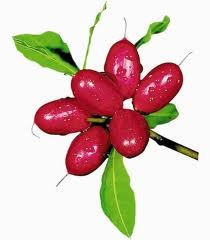
A few years ago, we heard about the miracle berry, a cranberry-like fruit discovered in West Africa that tricks your mind into thinking sour and bitter foods are sweet. The berry, which comes from the Synsepalum dulcificum plant source and has the common name “miracle berry” (and sometimes “miracle fruit” or “sweet fruit”), emerged in the U.S. as a novelty, marketed on sites such as ThinkGeek with lines including, “Warp your taste buds” and “Fun for tasting parties.” My sucker husband bought a pack, and lo and behold, they do work! Pop in a berry, and lemons taste like oranges. Tomatoes taste like really, really sweet tomatoes. It's freakin' weird.
But can these miracle berries serve a purpose beyond a cool house-party trick?
]
Chicago chef Homaro Cantu thinks so. At last week's TED
conference in Long Beach, he told an audience that he believed the
berries could help feed people in famine-stricken regions
by transforming what would normally be inedible ingredients, such as
wild
and bitter grasses, into palatable food, Wired
reports. For his own two daughters, Cantu makes a faux maple syrup (a
concoction of corn starch, water, lemon juice and the miracle berry) and
a faux soda (carbonated water, lemon juice and the berry). So sneaky.
Critics, however, say this hunger-ending method is cost-prohibitive, as
it originally took three berries to produce one tablet. Today, though,
one berry can make 16 tablets, and Cantu says they're also experimenting
with miraculin–the plant protein that binds to the sour and bitter
receptors in the mouth, preventing these flavors from being tasted–in
powder and an
inhalable form. The berry may also have possible health benefits,
serving as a
natural sweetener for diabetics and eliminating the metallic
flavor chemotherapy patients taste in food.
Now, who wants some grass for dinner?

